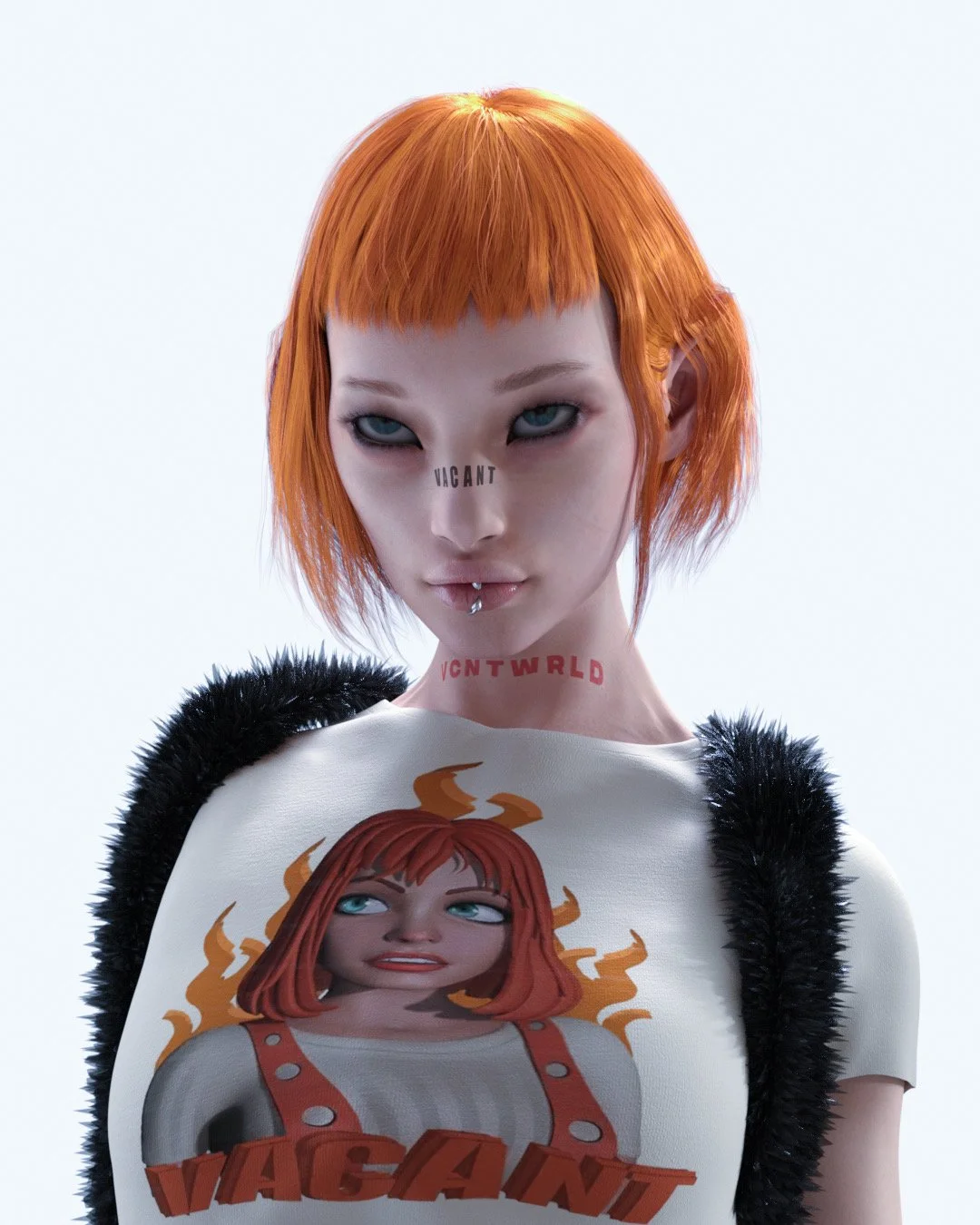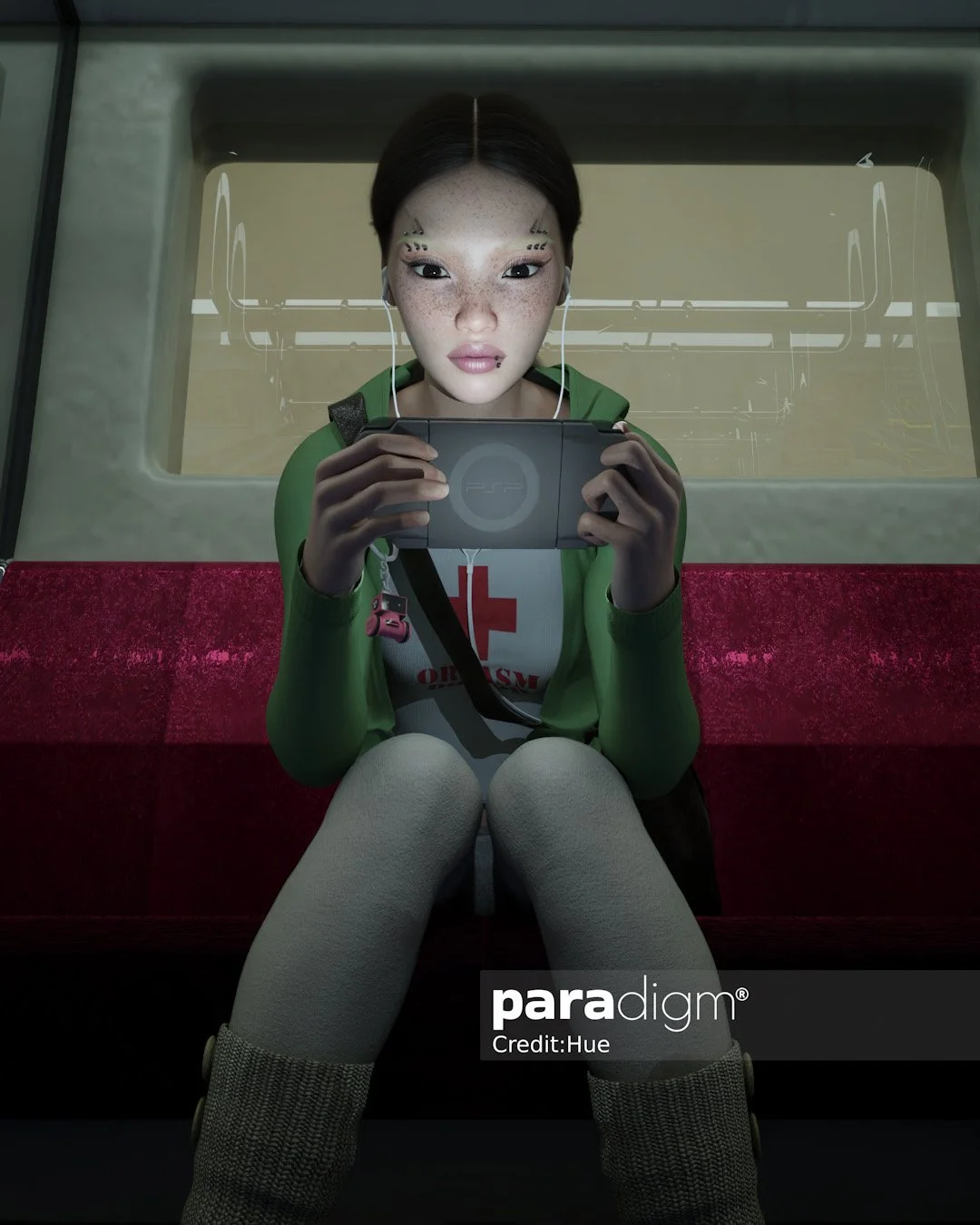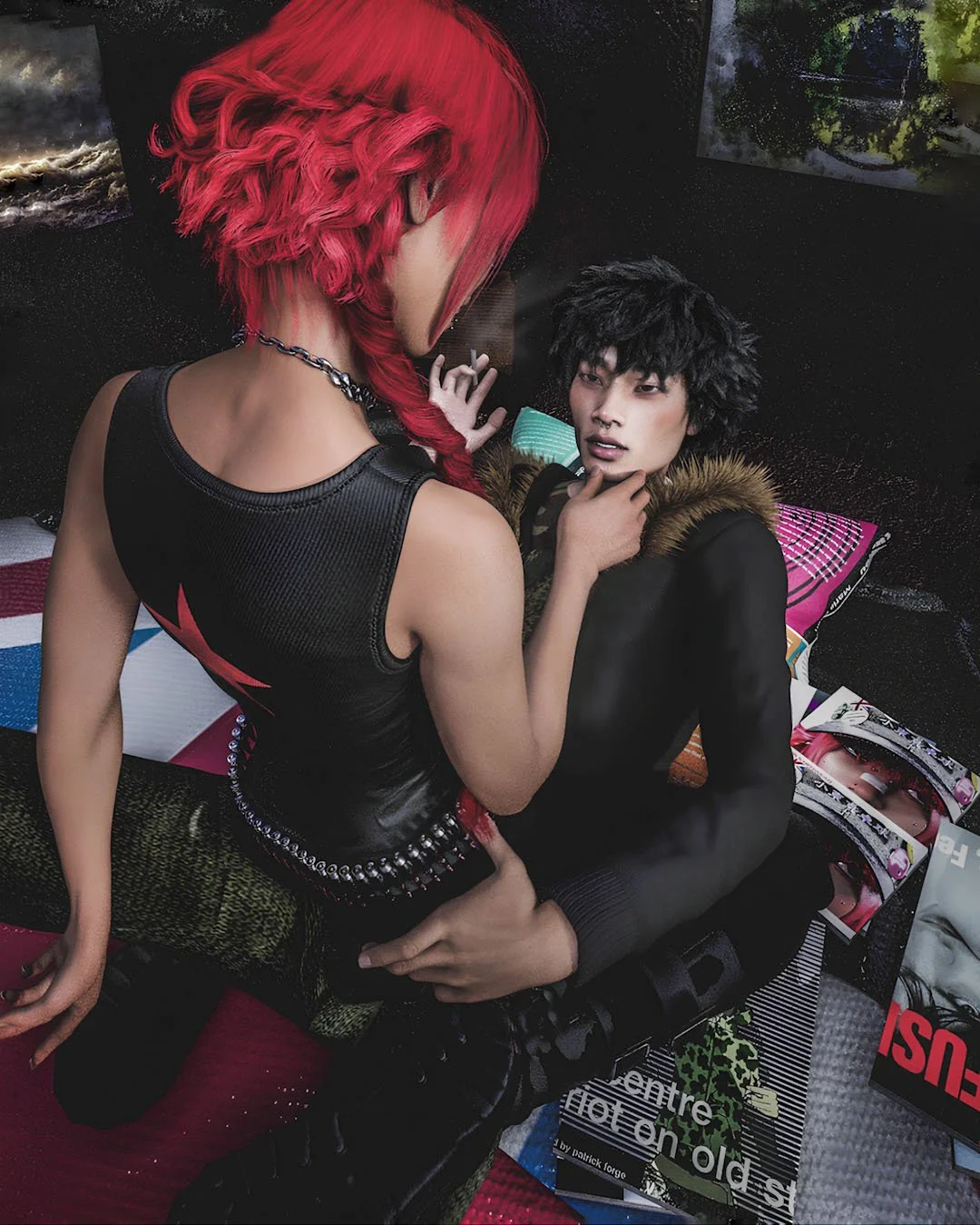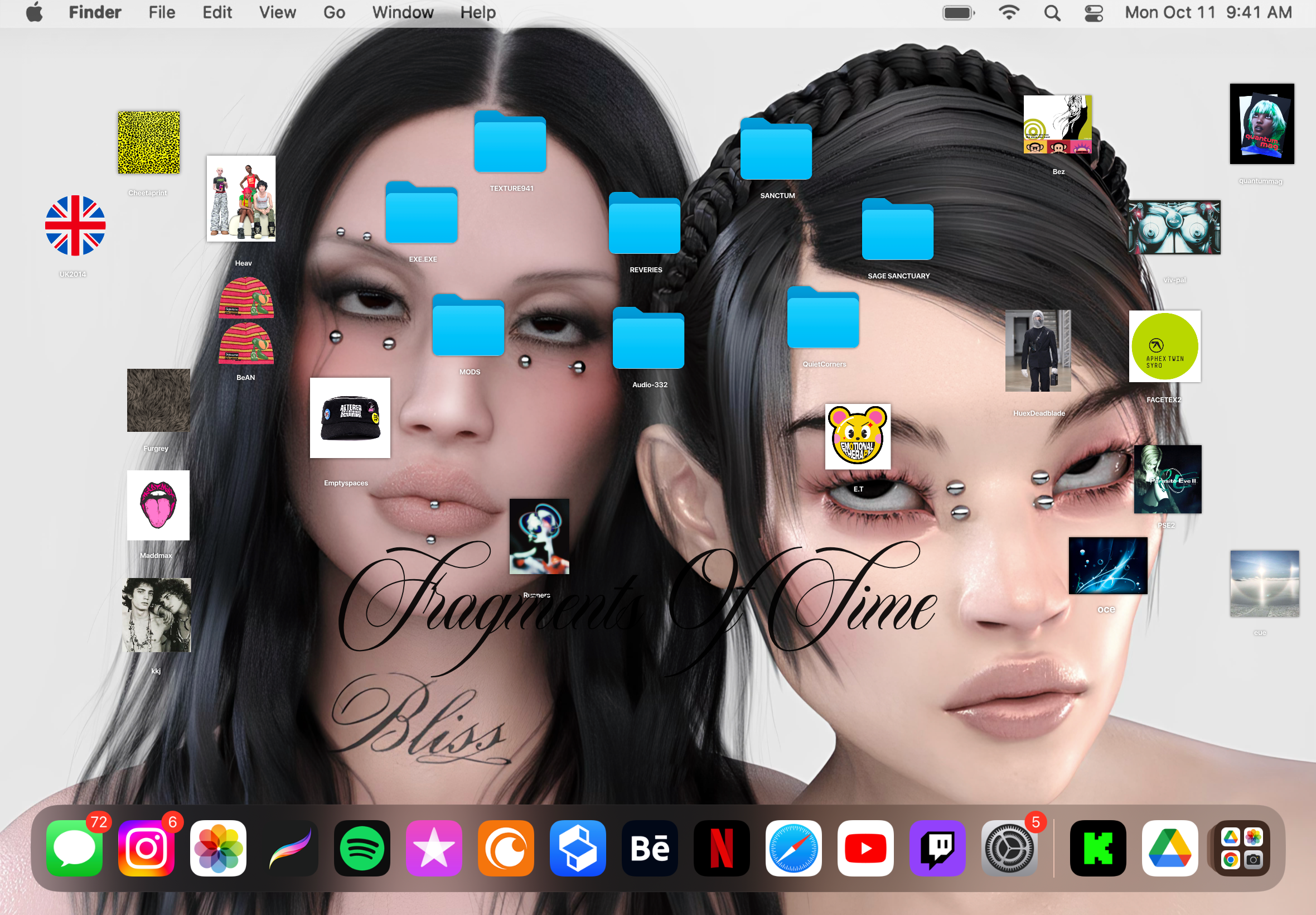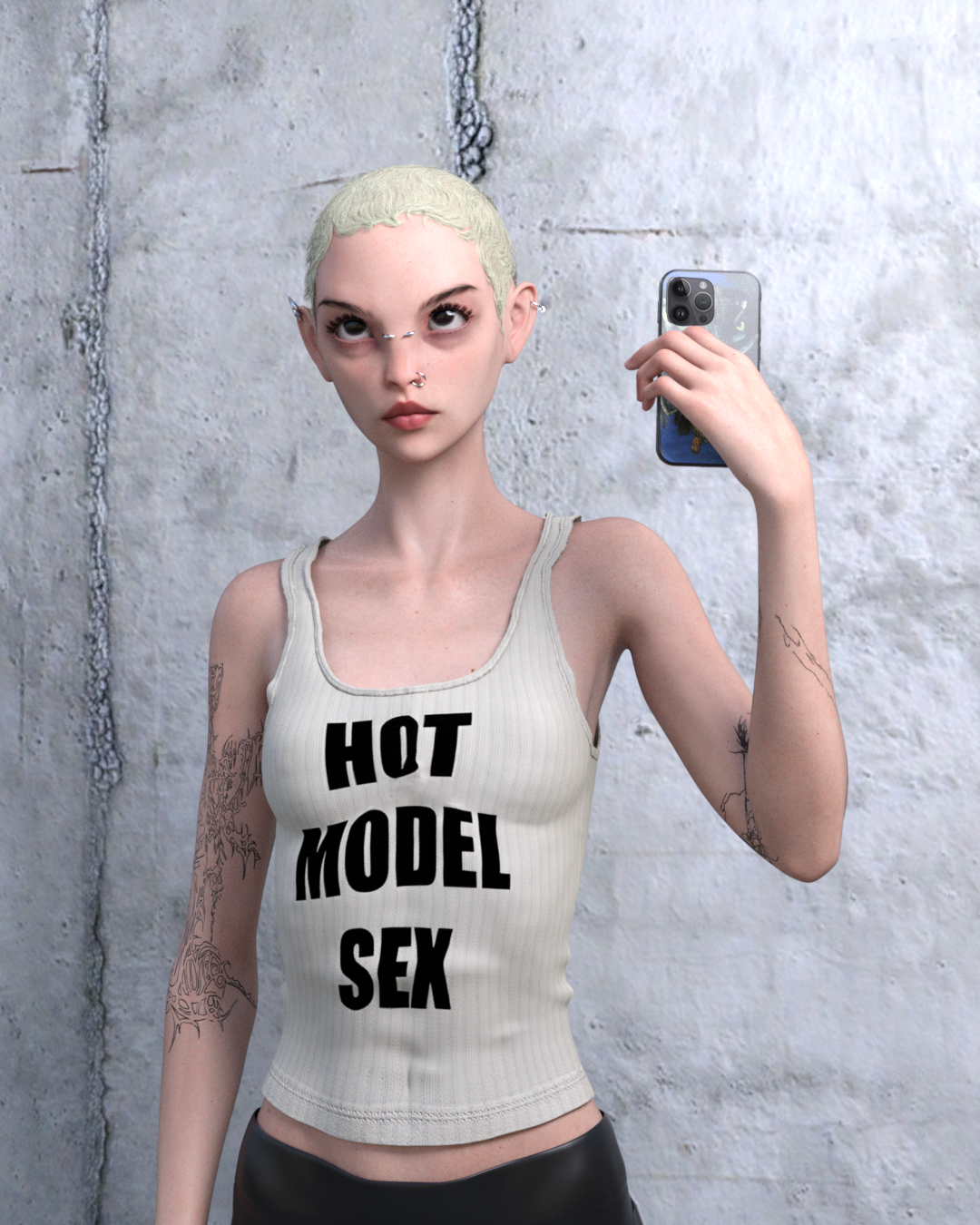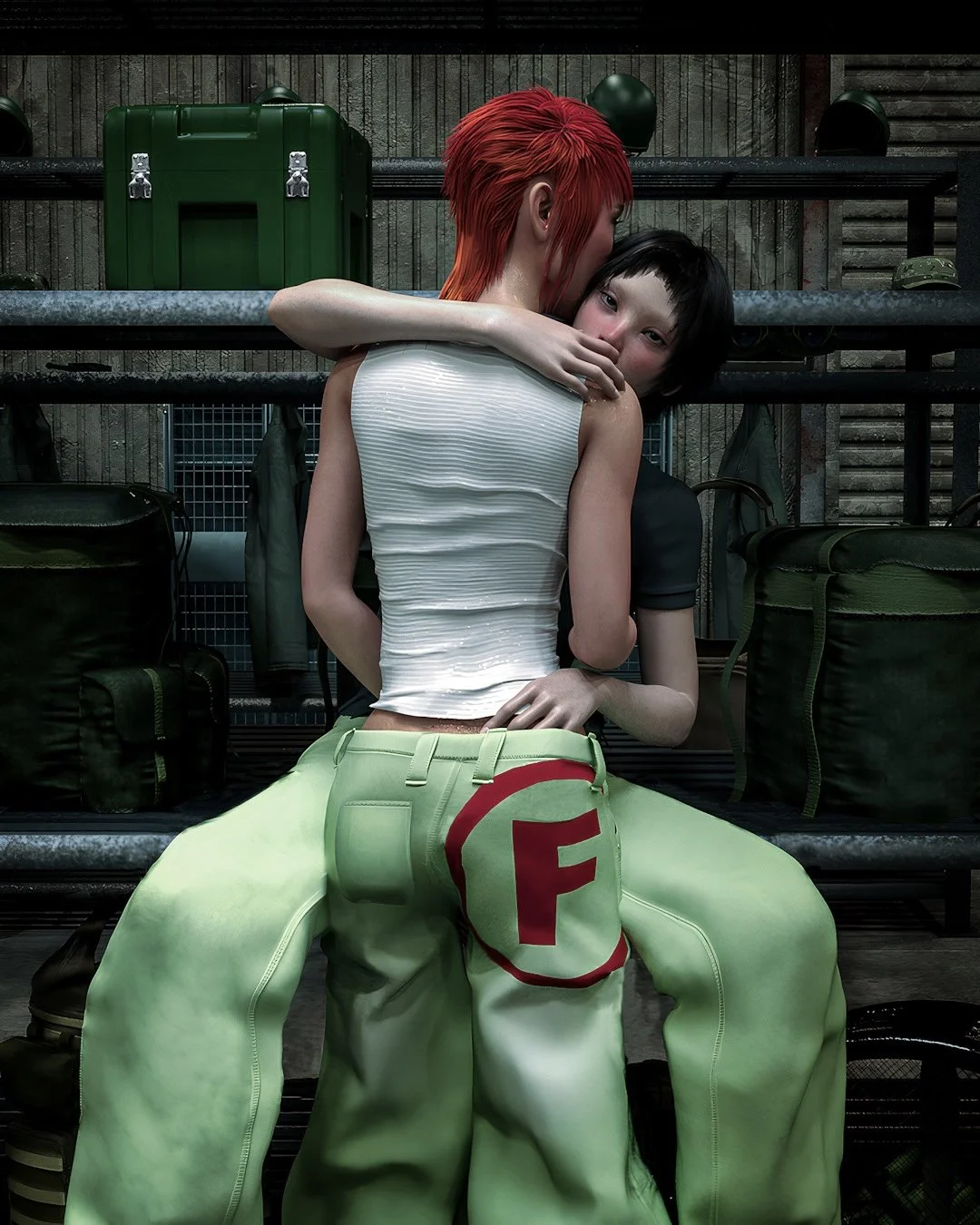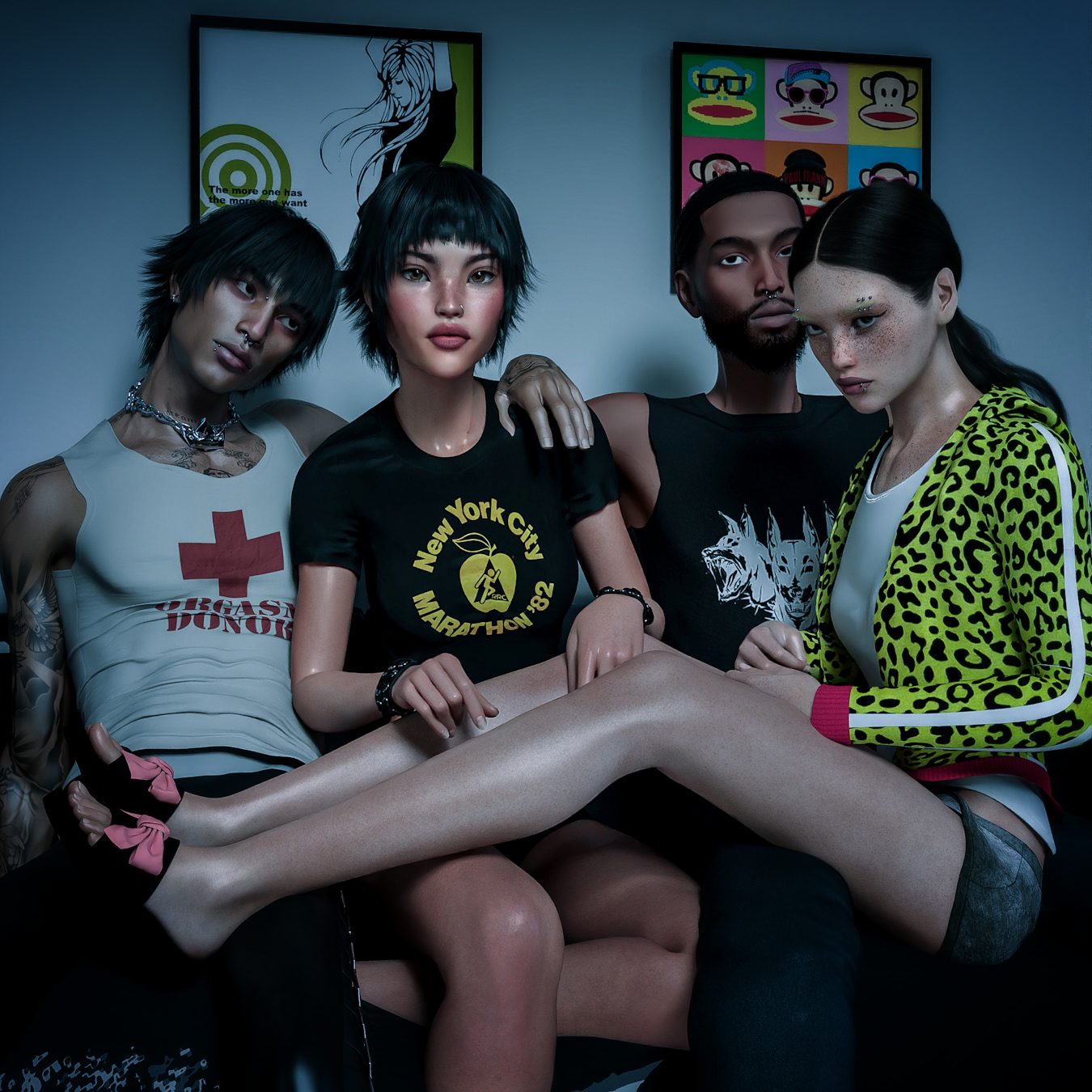Building Creative Arenas: HueRheim on Digital Innovation and Community
December 13th 2024 | Isabel Lotus
Digital Spaces as Creative Arenas
As the digital realm continues to redefine creative landscapes, artists like Hue, known online as Huerheim, exemplify exactly how virtual spaces are forging ‘digital-first’ creatives, and how the industry is listening. Hue’s journey began with merchandising and styling, and quickly evolved into creating 3D assets for platforms like Second Life and IMVU. As Hue realized he was drawn to the beautiful and the unconventional, it wasn’t long before they were weaving virtual elements into showcases like they were always meant to be there. These experiences not only honed technical skills but also allowed Hue to explore abstract and untraditional designs that might not fit conventional molds. By using these digital arenas, Hue broke free from physical limitations, showcasing work that’s experimental, and deeply personal.
“Digital-first fashion and art give us the freedom to create pieces that are unconstrained by physical limitations, whether that’s the laws of physics, the cost of materials, or conventional styles”, Hue reflects. "It’s a unique way for creators to bring their visions to life beyond conventional boundaries." This perspective highlights the transformative potential of digital-first creativity, where imagination isn’t confined by physical resources or tactile hindrances.
Community as Co-Creators
Digital spaces are not just hosting spaces for creative works; they nurture participatory communities. For Hue, the audience plays an integral role in the creative process. "Seeing how people react to my work online creates a feedback loop that encourages me to experiment and push boundaries," they explain. Through this interactive relationship, audiences become co-creators, influencing the direction of artistic exploration through sharing, remixing, and adding their own twists to Hue’s work.
This real-time collaboration forges a sense of shared ownership, transcending one’s creative journey into a collective experience. It also underscores the power of community as both a source of inspiration and a catalyst for innovation, demonstrating how digital platforms can democratize and energize the creative process.
Hue taps into the crux of internet culture, where consumption turns into creation. Streaming, and identity feed off each other in a constant exchange. He gets to the heart of it: “Music is a core part of my art and online identity, guiding and inspiring my creative process. Whether it’s indie, DnB, alternative, rock, rap, or other genres, I blend this with my observations from daily life; what people wear, how they style it, and the latest trends I find online.” This creates an intersectionality where different genres, cultures, and trends—once isolated—now inform and shape one another, merging into a homogenized online experience. It’s a loop, not just of influence, but of active participation. The consumer doesn’t just absorb, they create—shaping their own art in the process.
Blurring Lines Between Digital and Physical
As digital and physical art forms converge, creatives are finding ways to integrate the traditional with the intangible. Hue nods to brands like Balenciaga and Off-White, which have seamlessly integrated virtual elements into physical showcases. "Sometimes adding 3D elements enhances a showcase; other times, the vision is already complete without them," they note. This approach reveals a delicate relationship between art and fashion, where digital tools become not just enhancements but integral to worldbuilding.
The growing acceptance and potential of digital-first art in mainstream culture is a reminder that the bleeding at the intersection of mediums is the future. Hue reminds us that “world-building requires a level of authenticity and uniqueness that only comes from being deeply connected to your own vision.” That authenticity is key to making the virtual experience feel real and impactful.
An important lesson: You never know who’s watching. Hue learned this firsthand when Virgil from Off-White reached out via Instagram for a 3D showcase collaboration. It’s a reminder that staying true to your vision can open doors, even in unexpected ways.
Hue’s ethos speaks to the broader future of creativity, where the lines between creator and audience, digital and physical, continue to blur. As new platforms and tools emerge, they offer unprecedented opportunities to innovate and connect. Hue’s story is a testament to the unprecedented possibilities of this era. Lastly-
What advice do you have for other young creatives who are looking to take that first step?
For young creatives, my best advice is to start experimenting with what excites you, even if it feels niche or “out there.” Try different softwares and programs , explore virtual communities, and build a portfolio with what you make. Don’t be afraid to be bold and take inspiration from unexpected places. The digital space is big, and there’s room to carve out a style that’s entirely your own. Remember, you’re building a journey, not just a product. So to that I say Engage with others, learn from their feedback, and keep evolving your vision, you never know what will resonate or where it might lead you.
We’d like to thank Hue for sharing their story.
Find Hue on Instagram: @huerheim

